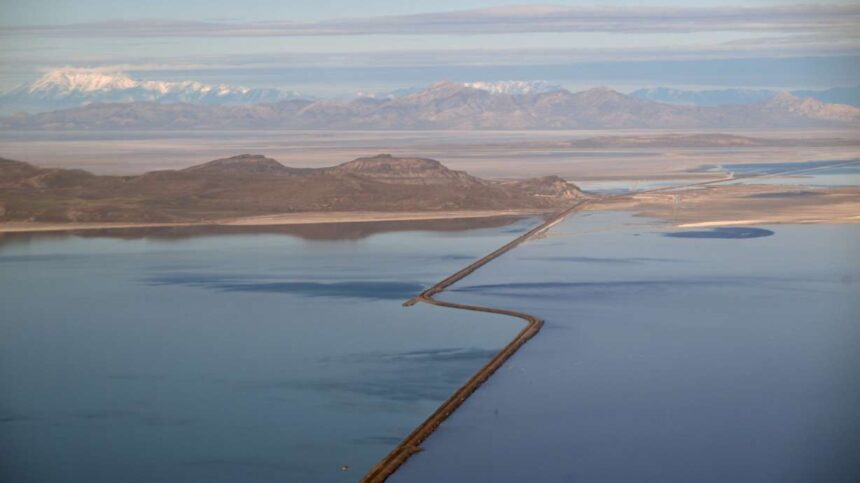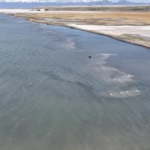Editor’s note: This article is published through the Great Salt Lake Collaborative, a solutions journalism initiative that partners news, education and media organizations to help inform people about the plight of the Great Salt Lake.
SALT LAKE CITY — The average elevation of the Great Salt Lake’s southern arm reached 4,195 feet elevation this week after periodically flirting with the level over the past few weeks, but the state agency tasked with managing the lake said it believes the section will recede this summer.
Still, Great Salt Lake Commissioner Brian Steed said it’s an important moment in the ongoing efforts to protect the lake after it reached an all-time low two years ago. The Office of the Great Salt Lake Commissioner views 4,195 feet elevation as the beginning of the “transitionary zone,” where there are still adverse effects but not as dire as anything below 4,192 feet elevation.
“That’s a significant number,” he told members of the Utah Legislative Water Development Commission during its meeting on Tuesday. “There’s a substantial recovery from those lows in 2022, to where you see water in Farmington Bay as well as the Bear River Bay. You see that Fremont Island is an island again with water around (it).”
The state’s ultimate goal is to get the Great Salt Lake back to its minimum healthy level of 4,198 feet elevation, but Steed views 4,195 feet as the “next level up” toward that goal. The southern arm fell to 4,188.5 feet elevation by November 2022 and topped out at 4,194.1 feet elevation last year after the state’s record snowpack melted.
Its northern arm’s recovery has been a bit slower. The southern arm gained about 5½ feet last year because the Utah Division of Fire, Forestry and State Lands raised a berm at the causeway that splits the lake in half. This cut flows to the northern end so that the southern end’s ecosystem could recover faster.
Water is once again flowing to the northern arm, helping it get back to 4,191.8 feet elevation this week. Its recovery is also why the southern arm’s gains have been less pronounced this year.

The lake is expected to gain a little more as Utah’s snowpack melts. About 9.9 inches of snow water equivalent is left within the mountains that feed the Great Salt Lake basin, which is about 144% of normal for mid-May, per Natural Resources Conservation Service data.
Steed said it appears the lake might gain another half-foot this spring, but it depends on how much is diverted toward irrigation. The lake will likely drop again over the summer, as the snowmelt runs out and the irrigation season picks up.
“Like every year, we see about 2 feet fall from evaporation, so we expect after we hit a high mark on the Great Salt Lake over the next couple of weeks, we’d expect that to start declining again,” he said.
While the lake won’t reach its minimum healthy level this year, the Office of the Great Salt Lake Commissioner is optimistic about the progress. It reports that salinity levels are “much healthier” than they were two years ago, which means more brine flies and brine shrimp this year — good news for the millions of migratory birds that utilize the lake every year.
The Utah Division of Wildlife Resources reported in Feburary that the latest brine shrimp collection period yielded 50% more shrimp than the previous year. The agency also reported that white pelicans were starting to return to islands impacted by low water levels.
“We’re having more ecological productivity on the south arm,” Steed said.










